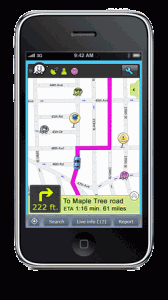Wayfinding Introduction
Whats up with the growing interest in Indoor Interactive Wayfinding?
The demand was always there.
 Older buildings were built with practicality and functionality in mind. Static wayfinding signs help to get around, but can’t solve the problem completely, but it was all there was. Now those companies and institutions grab the opportunity to increase their visitor experience with interactive wayfinding.
Older buildings were built with practicality and functionality in mind. Static wayfinding signs help to get around, but can’t solve the problem completely, but it was all there was. Now those companies and institutions grab the opportunity to increase their visitor experience with interactive wayfinding.
Intriguing is however, that also companies that build new buildings are looking into interactive wayfinding and budget it right in, along with all other capital expenditures.
A perception on how the technology evolved and why we all seem to be ready now for self-service wayfinding:
It all started all with President Bill Clinton, ordering Selective Availability of GPS turned off at midnight May 1, 2000, improving the precision of civilian GPS from 100 meters (about 300 feet) to 20 meters (about 65 feet). Until then, it was only available for the US Military. Source.
GPS=Global Positioning System. A GPS receiver (in your car GPS) calculates its position by precisely timing the signals sent by GPS satellites high above the Earth.
This opened the door for GPS use in commercial products and these days, well known Fortune 100 companies like Garmin and TomTom (car GPS) jumped right on it. We all know were it led to; just try to imagine a life without their products. Later on, Google jumped on the bandwagon too, utilizing their Google Maps Engine on Android Phones, connected to GPS.
These companies set the course and made us all (too) comfortable using the wayfinding technology to get around.
Over the recent years, a couple of trends happened more or less simultaneously that paved the way for indoor wayfinding:
-
As mentioned, the Googles and the Garmins made us very comfortable with using wayfinding systems. First at home on the computer with MapQuest (yes, it is still around), then the GPS wayfinder in your car and now they introduced wayfinding on the mobile.

-
Self-service kiosks made their re-entry in public environments, after a failed introduction 10-15 yrs ago (think about the Airline self check-in). Turned out we weren’t ready for the scary bulky-looking kiosks back then. Apparently, we are ready now, kiosk are popping up everywhere and are being used. Self-service systems are becoming a part of our every day life.
-
Digital Signage is taking over the world. Digital Signage is the display of messages and advertising (content) on electronic media like LCD’s. The industry is making these Digital Signage screens more and more functional, most recently by integrating the touch screen functionality. Think about public ordering systems where by touch you can combine your breakfast or lunch. This trend not only conditions us to use self-service systems but also makes overall the cost of touchscreen LCD’s go down, making the market easier to enter with a lower investment.
Conclusion:
The hardware and software technology is ready and affordable, the people are ready, so now we just need to come up with useful applications and make them.
Looks like indoor interactive wayfinding is reserving a fixed field position for itself and is here to stay, right next to the static wayfinding signage.
www.here2theresoftware.com
Phone: USA 814 – 342 – 3120
support@here2theresoftware.com
